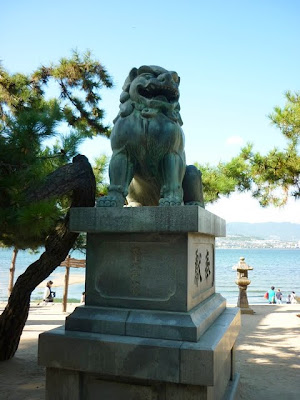
(A restaurant in near the Aquarium, Osaka)
First of all I had to ask, why use English at all? Why does it hold such popularity? Certainly, it's taught in schools from a very young age until you leave High School, but similarly, in the UK you learn French or German from a very young age and we haven't developed any kind of similar trend.

(A café in Kobe.)
I am so intrigued by this phenomenon. Not only is so much English used in advertising, usually, it's totally incorrect, either in spelling or grammar.

(A restaurant in Osaka.)
This really made me laugh. Much of the time it seems that they've simply put a Japanese phrase into a second-rate online translator and used the output, whatever or however incorrect it may be. This seems so strange to me, when Japan seems to be a country of English learners, that incorrect English is so rife. Maybe I am expecting too much - it's not like I don't make hundreds of mistakes while speaking Japanese every day, but at the same time, I don't think I'd have a Japanese slogan printed on menus and advertising and even the main sign of my shop, if I wasn't 100% sure that it was correct.

I asked one of my Japanese friends, "why are there so many signs in English? Why are so many shop names in English? Why are they not in Japanese?". Her answer was, "because English is cool". I had to ask, though, "Can Japanese people read them? Often the signs come without katakana, so can people read it?". "Not always", she said, though this didn't seem to faze her. I continued "However, if a person, say, bought a really nice shirt from a certain shop which had an English name, and wanted to recommend it to a friend - if that shop didn't have a katakana transcription, and the person couldn't read it, how could they recommend it?". She thought about that for a long time, then said with amusement, "I don't know".
I guess we might never know, but there's no doubt that it's never going to stop, and the Engrish is just going to keep getting funnier.

At what?!











